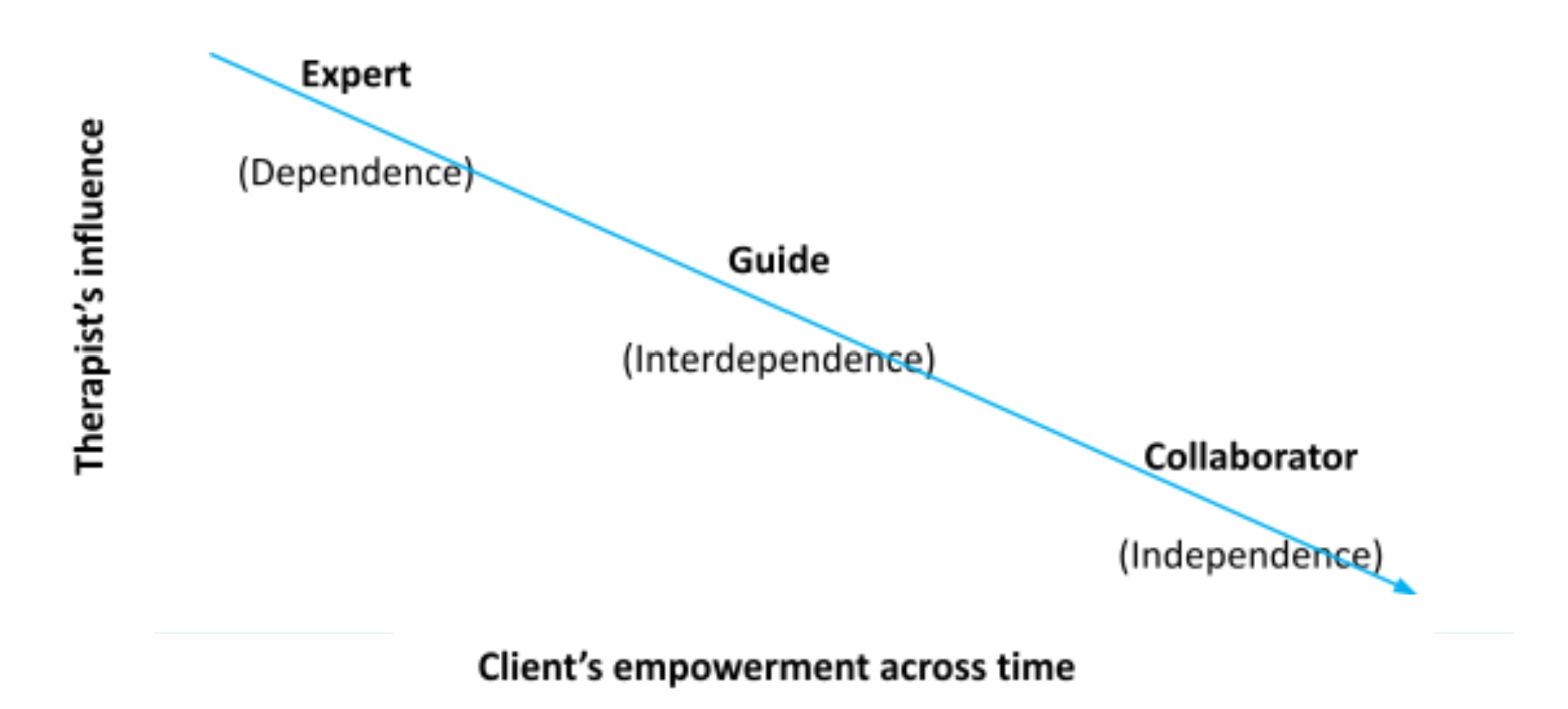The purpose of therapy and coaching is to end the need for therapy or coaching. Our clients will come to see us because they need our help. In the initial stages, most of them will be dependent on us to some extent – they will re-enact their insecure/avoidant/ambivalent attachment patterns (see upcoming post for a description of attachment patterns), require some structure outside of their psychic capacity (clinical context), need to orient to a more organized bio-psychosocial system (the therapist) – and it is our duty to support them in these critical initial stages.
Our modeling of attuned humanistic attitudes and therapeutic postures of compassion, equanimity, friendliness and joy will help to reprogram the developmental mis-attunement they will have suffered throughout their life (through complex trauma, low socio-economic conditions, authoritative education, etc). Our clients’ trust in the therapeutic alliance will give us leeway to help shape:
- their internal responses to nervous system sympathetic and parasympathetic arousal and thresholds (somatics);
- their navigation of dark (negative) and lighter (positive) affective experiences (affective development);
- a higher self-esteem through self-acceptance, encouraging creative outlets, orienting them towards life-fulfilling goals and a (self-determined) ethical livelihood (cognition and self-representation), as well as;
- more securely attached relational patterns and deeper belonging in interpersonal bonds (relationships).
An empowering trajectory
In order to be free from therapy or coaching, our clients will need to build increasingly self-organizing capacities on all the levels described above (somatics, affect, cognition and relationships). As this empowerment process occurs, they graduate through different stages of dependency: dependence, interdependence and independence (see diagram 1).
 Diagram 1. The therapists’ postures as clients integrate the empowering therapeutic experiences
Diagram 1. The therapists’ postures as clients integrate the empowering therapeutic experiences
This linear therapeutic progression initially follows a top-down structure (client dependence) to a balanced power position (therapist nourishing clients’ existing resources), to a collaborative structure (therapist bringing useful, but replaceable, spaces and inputs) in its final stage of development. As a cyclical process, the therapeutic relationship will have many implicit and explicit collaborative moments in the early dependent stages, and still some areas where the therapist will remain an expert at the ‘independence’ stage. This linear progression is only a rough schema of a complex, multifaceted and omni-relational process of development.
As the therapeutic process begins, a therapist will use their influence in various ways (i.e. attending, tuning, somatic mirroring, positive reinforcement, vulnerable self-disclosures) to feedback to the client all the external projections towards a multi-faceted empowerment (somatically, affectively, cognitively and relationally – more on this in a future blog). As the therapy unfolds, and clients integrate these empowering clinical interventions, the balance of power shifts (interdependence stage), and therapists can point more explicitly to the clients’ resources and skills, and further their organismic confidence.
At the neurobiological level, the skillful furthering and development of the client’s intrinsic organismic movements in bio-psycho-affective states gives their organism the signal “I can rely upon myself, I can count and depend on myself,” independent of the therapist’s presence or interventions. The building of self-organising capacity is one of the key factors for clients to integrate their experiences in therapy into daily life and sustain deep and meaningful transformations. As Otto Rank said, “the purpose of the therapist is to help the person to develop into that which they are” (Rank, 1936). Achieving this enables independence, ending the need for therapy. HURRAY!
May this article be for the benefit of all being.
You can learn more about the application of these evolutionary and systemic models, their associated neuroscientific empirical research, practice and interventions along with time for practice in our workshops, courses and trainings at www.neurosystemics.org.
Together we go further.
References
Rank, O. (1936). Will therapy. An analysis of the therapeutic process in terms of relationship.



